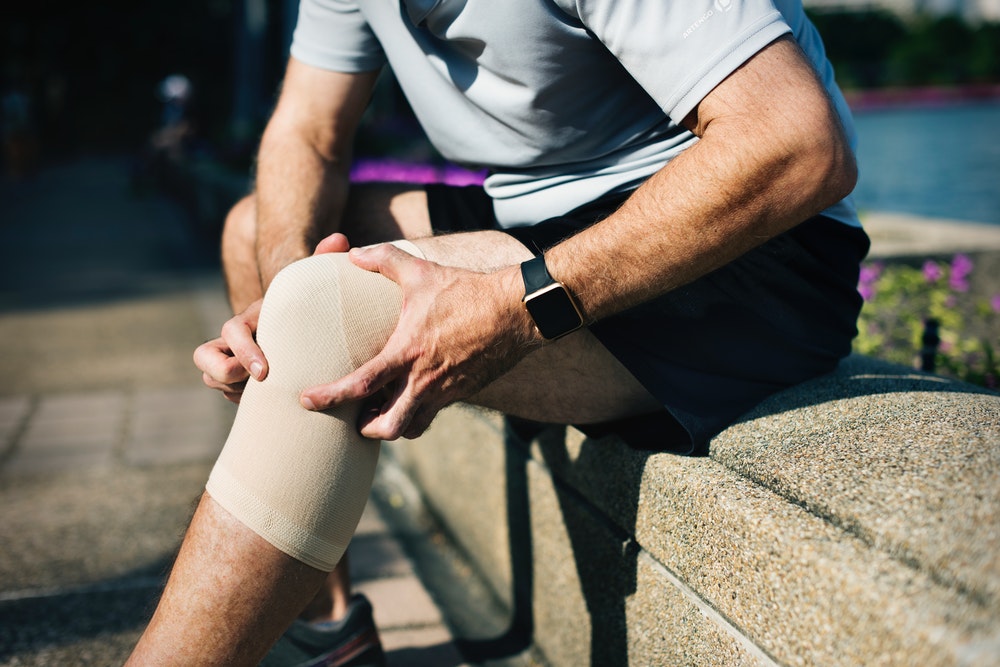Everyone who works out regularly or engages in other forms of physical activity is very well acquainted with muscle soreness. Experiencing post-workout soreness or “feeling the burn” is usually a good sign that your muscles are growing stronger and the hard work you put in is paying off.
While muscle soreness is normal, sometimes that pain can actually be an indication of a major injury. Injuries occur when the burn you feel pushes your body too far and the soft tissue tears. When you don’t notice a moment-of-injury and take it for soreness, it can debilitate your condition before you even realize it.
Knowing the difference between soreness and injury is essential to keep you from harming yourself severely. So, how do you tell the difference if innocent soreness or a real soft-tissue injury?
Soreness vs. Injury: Telling the Difference
To maximize your exercise gains and minimize injury risk, it is important to be realistic about your activity threshold and to be able to differentiate between moderate muscle soreness and actual pain.
Type of discomfort
Muscle soreness feels achy, stiff and tight
Soreness usually makes your muscles feel tender to the touch, tired, or even feel like a burning sensation. It tends to affect an area or muscle group rather than one specific spot. The discomfort is spread out and it can feel pretty good if you enjoy the sensation of serious exercise.
Injury is sharper
An injury, on the other hand, is more specific to a certain area or spot and the pain is sharper, almost feeling like stabbing, deep pains. When you put weight on it, an injury will exhibit very locally specific pain, often so specific you could point to the exact spot where it hurts. If you try to use the muscle or walk on it, the pain tends to get intense.
Inflammation and Swelling
Swelling is slight with soreness
Muscle soreness does experience swelling as your body builds newer dense muscle tissue and inflammation but the swelling is only slight and feels pulverized.
Injury swells up like a balloon
An injury, however, will often swell up like a balloon. An injury usually swells up two or three times its normal size. Your body swells around an injury to create padding, protection, and tenderness to discourage further damage.
Duration
Natural soreness lasts for a shorter duration
Soreness from physical activity has a much shorter duration of time- typically a few days. People with muscle soreness may expect peak soreness to occur 24 to 48 hours after the activity. It may last anywhere from one to three days.
Injury may linger if not addressed
If soreness is not subsiding after three days, it may be a sign of potential injury. When soreness is accompanied by sharp pains or aches that continue to linger on after a few days, making it difficult to partake in normal, daily activities, it may because of concern. Another to identify if it is an injury is by if the pain doesn’t get any better with rest or with another workout.
Soreness sometimes can also mask an injury until it fades away.
Strength
Soreness makes the muscle feel weaker or shaky
Shaking, soreness, and a certain amount of weakness after intense exercise is a standard part of post-exercise muscle soreness and is very normal to experience. Soreness temporarily reduces strength but it usually fades in a day or so.
Injury cannot hold heavy weight
If you have torn a ligament in your ankle, calf, or knee, for example, your leg may feel a sharp pain as you step and it will not tolerate any kind of weight or stress. Unlike soreness, an injury causes your body to refuse to hold weight and creates intense weakness.
How to Get Better
Treating soreness
- Knowing your body’s limits, conditioning your body for the activity ahead and stretching post-workout.
- Get a massage. A proper joint massage with natural oil will keep your joints warm, reduce the inflammation and pain.
- Hydrate yourself. Drink plenty of water and amp up the lean protein to provide your body with muscle-building materials.
- Nutrition plays important roles in helping muscles recover.
- Allow days of rest and get adequate amount of sleep to give your body time and energy.
Treating injury
- Try ice and heat therapy that can often relieve pain, depending on the severity of the injury. Apply ice packs for 30 minutes of every 2 hours until the swelling goes down. Ice helps constrict blood vessels to reduce swelling and pain. With heat therapy, limit sessions to 20 minutes and be mindful to the level of heat you’re applying. Heat is typically used for chronic pain or conditions, old injuries and stiffness.
- Compression strategy is another good way to manage an injury. Wrap the injury in a compression bandage until the swelling starts to go down.
- Keep the injured area or spot elevated. When you are resting, elevate your injury to promote recovery. Elevate the area at least six inches above your heart which discourages swelling.
If your condition does not improve on its own or even after trying above ways, consult your doctor as soon as possible.




